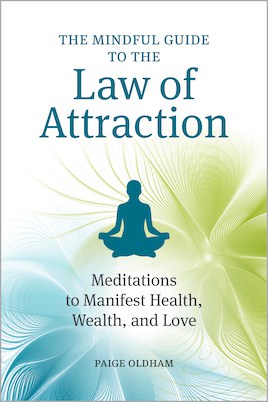We’ve all been blessed with heart-breaking situations where people have wronged us or things haven’t gone the way we would like. Moving past them is difficult.
If you’ve ended a relationship, job or time in your life, it’s tough to let go and move on. Your subconscious, or monkey mind, wants to hold onto it like a dog that won’t let go of a bone. It wants to chew on it, gnaw and dig into the painful center of it.
Your logical mind gets sucked up into the drama of the monkey. You start to think of “what if’s” and “if only’s” that your monkey mind creates to add even more drama and negative feelings.
It would be so much easier to just let go and move on with your life, but the monkey won’t let you.
You try to let go. You move onto the next relationship or job. Just when things seem to be going well again, the old thoughts start to arise again, sabotaging things.
Why is it so hard to let go? Why is it so difficult to forgive and forget?
The Need to Be Right
Because you’ve been wronged and your monkey needs to prove itself right. Safety is the monkey mind’s number one priority, and being wrong is not safe.
The monkey will go out of its way to dream up all the reasons that you were right and the other person or aspects of the situation were wrong. It won’t let go of the need to be right.
But there you are, stuck in the middle with your monkey screeching in one ear and your wiser self whispering in the other, urging you to move on.
Letting go can be hard because it means letting go of aspects of your past – aspects of you. It also means letting go of your expectations of how things should have been.
Letting go hints of being wrong or allowing someone else to be right (when you know that what they did was wrong).
Unfortunately, it’s all in the past and there’s nothing you can do about it. The drama, the holding on, is in your own mind.
You are the only one with the power to let it go.
Rather than possibly admitting defeat and letting go, what if there were another way? A more mindful way that has nothing to do with right and wrong.
Allow them to be as they are.
Let It Be
The only meaning that anything has is the meaning you give it.
If you were wronged, it’s because you told yourself that you were, and then you make up a story about that.
One of the core tenets of mindfulness is to observe without judgment.
Making people or things right or wrong involves passing judgment on them.
Could you look at the situation differently or more objectively? Could you create a different story about it? What lessons could you then glean from the whole mess? How could it help you?
Therapies such as EMDR (eye movement desensitization and reprocessing therapy) and tapping can help you to safely face your painful past and remove the emotional sting.
There’s a saying that the only way past fear is through it. All negative emotions are based in fear. An inability to let go is based in fear. If you weren’t afraid of letting go, you would have done it already.
People have a hard time letting go of their suffering. Out of a fear of the unknown, they prefer suffering that is familiar. ~Thich Nhat Hanh”
EMDR and tapping can both help you to safely face your fears around the situation, delve into them and move past them. EMDR has been clinically proven to be incredibly effective in treating PTSD (post-traumatic stress disorder). I’ve personally seen how quickly and effectively it works in my own life and in the lives of people around me. And the benefits don’t wear off over time.
The support of someone certified to practice EMDR or tapping can be especially beneficial as they can be a more objective observer of you, your thoughts and the related emotions. They can help you to see your blind spots – the areas that may have caused you problems much of your life.
Simple Steps
Depending on the level of severity of the situation you’re dealing with, you may be able to work through the emotions on your own. Here’s a process you can work through to loosen the grip of the “letting go” situation:
- Find a quiet place where you won’t be disturbed. Give yourself at least 30 minutes (an hour would be better) as you won’t want to break the flow of the process.
- Sit in a relaxed position in a chair or on the floor.
- Close your eyes and take ten deep breaths to calm and center yourself. Focus on the process of your breathing. Don’t force it to be anything. Just allow your body to breathe however it needs to.
- When you feel calm, think about the thing you want to let go of, the thing you want to release. Feel the feelings that come up. Don’t hold anything back.
- Focus on the strongest feeling. Exactly where do you feel it in your body? All emotions create homes in our bodies which create physical sensations (pain, heat, cold, numbness, tightness, etc.).
- Focus on the feeling in your body. Take time to understand exactly where it is and what the sensations are. Don’t try to make them go away as this will only cause them to persist. Objectively observe the sensation. Describe it in as much detail as possible. As you do this, the sensation may change and evolve. Stay with it.
- Once you’re clear on what and where the sensation is, ask it what message it’s trying to deliver. These types of messages come from your True Self and are there to help you grow and heal. The message may or may not be words. It may be colors, feelings, smells or any number of things. Be open to whatever arises. It may or may not be something that makes sense to you. Don’t judge it as good, bad, right, wrong, crazy or anything else. Simply be with it and allow the messages to come forward.
- When you feel that you’ve received as much of the message as you can, take ten deep breaths, focusing on the process and sensations of breathing.
- At this point, you can either sit with your experience or move to a different sensation in your body and repeat the last three steps.
- Open your eyes and start writing whatever comes up for you in a journal or notebook. Pen and paper work best for this process (no electronics). Keep writing for as long as you can without judging any of it. Neither you nor anything you write is wrong, crazy, stupid or any other negative judgment. Equally, neither you nor anything you write is right, brilliant or awesome. It simply is.
- In your journal, answer these questions: How can what I just experienced help me to move forward in my life? Can I see the difficult experience differently? Can I see myself differently? What can I do to minimize the emotional toll of similar experiences in the future and let them go as they occur? What would be a more supportive story I can tell myself about the situation?
- Repeat this process on a weekly basis until you feel that you can truly let go and move forward. I suggest weekly in order to give your subconscious time to work through what comes up in each session. You may have a revelation three days after a session that didn’t occur to you while you were originally journaling.
This process is like peeling an onion. Each session can bring you a little closer to your True Self and a better understanding of more supportive ways of handling future situations.
As new thoughts, feelings and emotions arise between sessions, write about them in your journal. During your journaling sessions, write until you feel that there’s nothing left to write about. Dig deep.
So often, it’s difficult to move past a feeling about a situation because you repeat a surface-level loop of thoughts and stories about it without moving any deeper. Journaling is a powerful tool that allows you to delve deeper and release what your monkey mind keeps pent up by its constant chatter.
Feeling the difficult feelings of something you want to let go of, examining how they manifest in your body and journaling about it all is a process of moving through and past your fears and creating a more empowered life.
The past is what it is and can’t be changed. You have the ability to create more empowering stories about it. Everyone lives in their own reality based on the stories they tell themselves about who and how they are.
It’s up to you to re-write your story.
What do you want to let go of? What patterns would you rather not repeat? What new narrative can you apply to the past to support your True Self?
Visit my Recommended Resources page where I post the latest list of books, programs, and products that I’ve found to be particularly helpful in growing your mindfulness and meditation practices.
Create the life you want: Combine the law of attraction with mindfulness
The law of attraction suggests that our positive or negative thoughts bring about positive or negative experiences. My latest book, The Mindful Guide to Law of Attraction, pairs that belief with the powerful practices of mindfulness. Through intentional breathing, writing, and engaging, you’ll hone a method for manifesting health, wealth, and love―the elements of happiness.
Let the law of attraction work for you by adopting its basic steps of identifying and visualizing the things you desire. Then use 45 practical meditation techniques included in the book to achieve awareness. By concentrating your positive energy on obtaining your wants, you’ll give yourself permission to receive them.
To your happiness! ~Paige

You can find this book at Amazon, Barnes & Noble, Books-A-Million, and Indigo.







 The Mindful Living Guide
The Mindful Living Guide




Awesome job on this article, very articulate and well focused
This is a wonderful process, Paige. I’ve experienced difficult change in the last few years, and yes, it’s been hard to let go. I wish I had a process like this at the time. I have found that have let go over time, primarily through my work in somatic based therapy. Thanks again for this process.
Thank you Sandra! It’s always good to have the tools to use in the future when you need them. Somatic therapy is definitely powerful!
Letting go is the toughest thing in life, whether it is a small thing or a big thing. And oh yes, that monkey is always screeching in my head when it comes to resolving something. It seems like our minds are wired to hang on to things. Sometimes, in the name of letting go, we just box issues up and push them into the farthest corner so that it can come back to haunt us when we’re low. Great steps here. Always a delight to read your insightful posts!
Thank you Vidya! You’re so right about the habit of stuffing things down, thinking that we’ve dealt with it, only to find it rear its ugly head when we least want to feel it.
I want to ask for a permission to translate this article to Bahasa Indonesia. I hope that people in my country who do not possess English skill can read this article in our language, get benefit from it, and improve their life. Thank you.
Thanks Paige Burkes for sharing such a great steps.
These steps really help people who wants to let go. Basically, letting go is not easy but if we implement these steps in our life then it can really ease letting go process.
Paige, I love the steps you mentioned in this article. They are so doable and do yield great results if we stay on it.
xoxo, Z~
Thank you, Zeenat! Yes, making it a regular practice is what brings results.
Hi Paige…wise tips on letting those toxic emotions go. I’ve always thought our best teachers are children, who manage to allow feelings to be felt and then flow right through them. I’m not sure at what point the feelings begin to flow less freely as they mature.
From a personal perspective I’ve always found it easier to see everything as part of a story I’m telling myself…and if the story isn’t creating joy in my life, then I start focusing on a new and better story. 🙂
I also agree with the ‘storyteller’ principle, Elle. Most people think there’s only one truth/reality about any situation. Actually, there are as many realities as there are people looking at the situation because each person makes up their own story about it based on their past, beliefs, and emotions. Like you said: If the story doesn’t help you, make up a new one!
I like the suggestion to actively working on letting go of the hurt weekly in a meditative session. It is a process. Too many want it to happen overnight. Unfortunately, that’s not the way it works. But it CAN and WILL happen.
Agree, Debbie! Our society makes us believe that we should be able to fix everything overnight with a magic pill, but lasting healing takes time.
I like the steps you’ve outlined to help let go of something that is keeping you stuck, Paige. I’ve experienced that endless mind loop when you can’t resolve something and yet you can’t let it go. Your process sounds helpful, as continuing to dwell on negative emotions is never healthy.
Thanks Cathy! Yes, I’ve found journaling to be extremely helpful in ending the otherwise endless negative mind loops.
Hi Paige thanks for an awesome post I loved reading it. There is no doubt that the ability to let go is at the root of lasting happiness. So much of society is based on struggling to find happiness through having more, getting more or achieving more and in doing so we give away our power to feel happy and free. I have found through a lot of struggle myself that real contentment and joy can be found through understanding and healing our inner world of emotions and conditioning and learning how to let go of the bonds of our past so that we live every fresh moment with a fresh perception. All the best
Rob
That’s beautiful Robert! Yes, letting go of our need to find happiness outside of ourselves can almost instantly bring in more happiness. It’s all about changing our attitude and beliefs and truly embracing acceptance. Thank you!!
A friend of mine gave me advice long ago, and I can’t remember exactly everything he said, but the line that stuck with me was “throw yourself against the swords”, or in other words, don’t try to avoid your pain but face it head on until it doesn’t hurt you anymore
That seems to be exactly what you’re suggesting here, except a much more “strategic” version of it (as opposed to just randomly thinking about it throughout the day as I did in the past). I can definitely vouch for its effectiveness, and it’s what I always suggest people do when they come to me with their problems.
You’re a wise one Mercury! Trying to run away from something fearful will ensure that it’s always there, running right behind you. Turning around and facing it is the first step to watching it dissolve.
Thanks so much!
This is such a helpful post. Thanks Paige! This is my first time to the site as well. Great insight into the deeper reality of life.
What helps me let go is knowing that it is going to be such a waste of time to hold on to the pain. Its going to cause me to feel like a victim, like I am powerless. Since I couldn’t control what happened to me I then feel like a victim.
This however is not true. What makes me a victim is if I believe I can control external circumstances. The power comes from believing its all about how I respond to any given situation. What meanings I attach to the event and so on.
Above all, knowing I have been forgiven of all my wrongs by our creator is what gives me the power to forgive others. 🙂
Thanks so much for your awesome comment Adam! It usually takes people quite a while to fully understand what you have written. We can’t control much of anything that happens around us. But we can control the stories that we tell ourselves which is what determines our feelings and emotions. All the best to you Adam!
Thanks for sharing such detail around this Paige. I don’t have any especial trauma to let go of, but I find it hard to let go of people, even when ti’s clearly time to move on. I might try it for that and see how it works for me.
Whether it’s something big, small or in between, letting go can be difficult. It’s all in how we allow our minds to hold onto things. Hope the process is successful for you!
Thank you for sharing such a detailed meditation around letting go. I always find it amazing how long we’ll allow things to stay before processing them. We get used to feeling the weight of what we wish we could drop. It can feel like scary work addressing the emotional challenges but it saves so much effort in the long run.
I completely agree with you Sondra. And sometimes it feels scarier to drop the old, negative baggage because we’ve allowed it to stick around for so long. We start to identify with it over time and become scared at the thought of releasing it because we don’t know what will replace it. It’s a risk worth taking though.
This is so true, Paige: “The drama, the holding on, is in your own mind. You are the only one with the power to let it go.” Thanks for sharing this detailed process for learning to be with whatever is. It’s also been my experience that if we simply allow emotions without getting entangled with them, they will in time dissolve. I haven’t had the same experience with EMDR, but I’ve heard many people have. For me, that’s probably because it’s very good for shock related trauma, but less so for developmental trauma.
Thanks so much Sandra! I’ve had the same experience with allowing emotions. They seem like part of us so it’s easy to get wrapped up in them (or allow them to wrap us up). Ultimately, they’re like passing clouds that we can observe as they pass by, always fleeting.